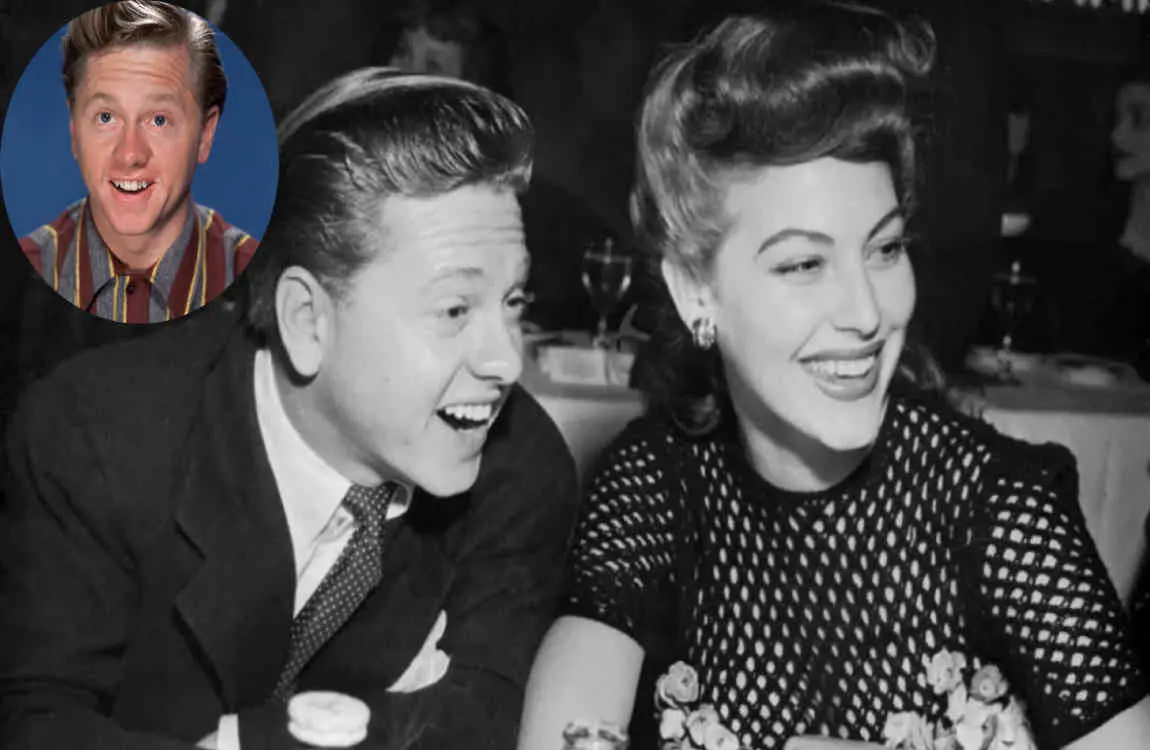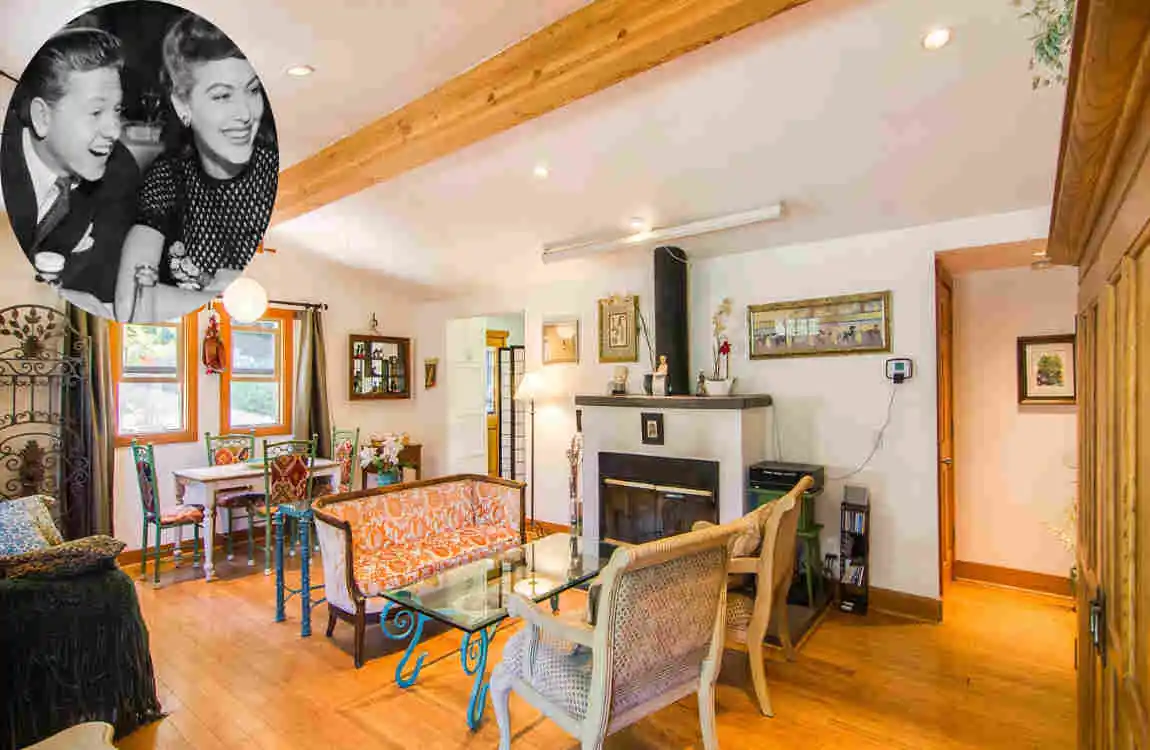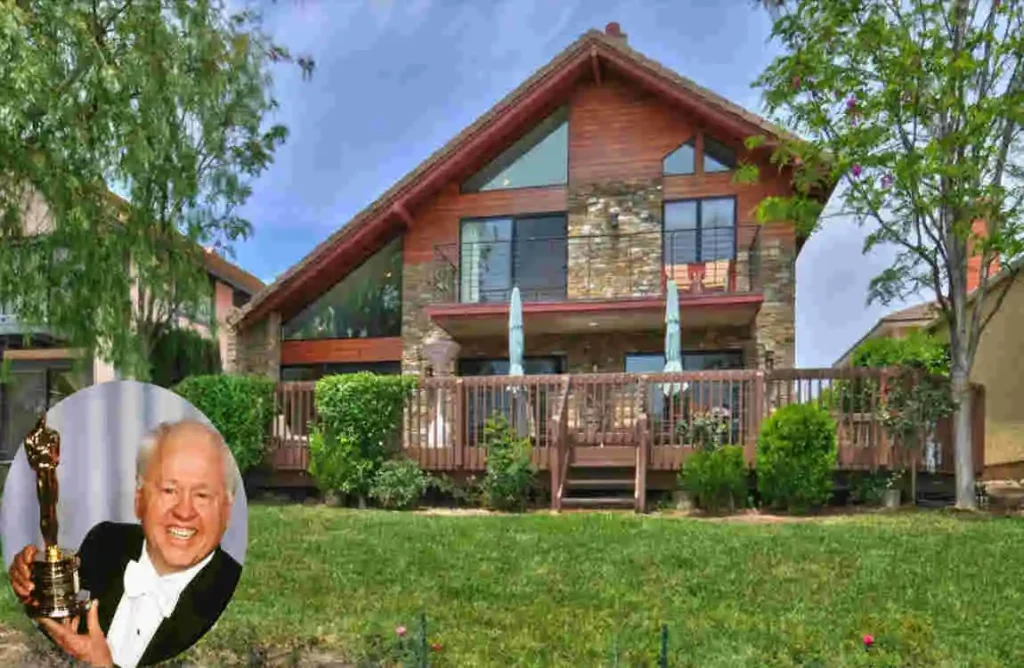Imagine stepping back in time to the golden age of Hollywood, where stars like Mickey Rooney lit up the silver screen with their charm and talent. Mickey Rooney’s House isn’t just a building—it’s a living piece of history that whispers stories of laughter, drama, and the magic of showbiz. As one of the most enduring child stars turned Hollywood legends, Rooney’s life was a whirlwind of films, marriages, and unforgettable performances. But what if I told you that his home holds the key to understanding the man behind the myth? That’s exactly what we’ll dive into today.
From there, we’ll take a peek at its architectural gems, the cozy interior décor, famous events that have happened there, and how it stands today as a symbol of Hollywood’s past. Along the way, you’ll discover why celebrity homes like this one matter so much in preserving our cultural heritage.
Why does Mickey Rooney’s House fascinate us? Well, think about it—celebrity homes aren’t just fancy addresses. They serve as time capsules, capturing the essence of an era when Hollywood was at its peak. These places remind us of the human side of stars: their joys, struggles, and everyday lives. For Rooney, who starred in over 300 films and navigated the ups and downs of fame, his house was a sanctuary amid the spotlight. It reflects the glamour of old Hollywood while grounding us in the personal stories that shaped a legend.
| Category | Information |
|---|---|
| Full Name | Joseph Yule Jr. (Stage name: Mickey Rooney) |
| Date of Birth | September 23, 1920 |
| Place of Birth | Brooklyn, New York, U.S. |
| Date of Death | April 6, 2014 |
| Age at Death | 93 |
| Parents | Joseph Yule Sr. (father), Nellie W. Carter (mother) |
| Marriages | 8 marriages, notable wife: Ava Gardner |
| Children | 9 children (including adopted), 2 stepchildren, 19 grandchildren, several great-grandchildren |
| Notable Works | Andy Hardy series, Babes in Arms, The Human Comedy, National Velvet, Breakfast at Tiffany’s |
| Financial Status | Declared bankruptcy twice, had financial problems due to bad investments and multiple marriages |
| Net Worth at Death | Approximately $18,000 (reported estate value) |
| Current Residence | Deceased (last lived in North Hollywood, California; sold home in Sherman Oaks before death) |
Rooney’s story isn’t just about movies; it’s about resilience and reinvention. Born in 1920 as Joseph Yule Jr., he started performing as a toddler in vaudeville acts with his parents. By the 1930s, he had become a household name, starring in the Andy Hardy series and sharing the screen with legends such as Judy Garland. His career spanned nine decades, earning him accolades like Academy Award nominations and a special Juvenile Oscar. But behind the scenes, Rooney faced personal challenges, including multiple marriages and financial woes. Mickey Rooney’s House became a reflection of that journey—a place where he could escape the chaos and build a life.
Who Was Mickey Rooney?

Early Life and Rise to Fame
Let’s kick things off by getting to know the man himself. Mickey Rooney, born Joseph Yule Jr. on 23 September 1920 in Brooklyn, New York, didn’t waste any time entering the world of entertainment. His parents were vaudeville performers, so young Mickey practically grew up on stage. By the age of six, he was already appearing in films, adopting the stage name Mickey Rooney after a character he had played.
Rooney’s big break came in the 1930s with the Mickey McGuire short films, where his infectious energy and comedic timing shone through. He quickly became one of Hollywood’s top box-office draws. Imagine being a kid and out-earning adult stars—that’s the kind of impact he had. His roles in movies like A Midsummer Night’s Dream and the Andy Hardy series made him a teen idol. Rooney wasn’t just acting; he was captivating audiences with his boyish charm and versatility.
As we consider Mickey Rooney’s House, it becomes clear how his early fame influenced his later life choices. He bought homes that offered privacy and space to unwind from the relentless pace of stardom. Reader, have you ever felt the weight of expectations? Rooney did, and his house became his retreat.
Career Highlights and Challenges
Rooney’s career was a rollercoaster that spanned over 90 years. In the 1940s, he teamed up with Judy Garland in musicals like Babes in Arms, creating on-screen magic that defined an era. He served in World War II, entertaining troops, which added a layer of heroism to his persona. Post-war, he transitioned to more mature roles in films like The Black Stallion and even Broadway shows.
But fame came with pitfalls. Rooney faced financial troubles, multiple divorces (eight in total, including to Ava Gardner), and battles with addiction. Despite these, he bounced back time and again, earning an Honorary Academy Award in 1983 for his lifetime achievements. His resilience is legendary—think about it, how many people reinvent themselves that many times?
This grit is mirrored in Mickey Rooney’s House, where personal artifacts from his career likely dotted the walls. It wasn’t just a home; it was a testament to Survival in Hollywood’s cutthroat world.
Impact on Pop Culture and Legacy
Rooney didn’t just act; he shaped pop culture. He influenced generations of performers, from child stars to comedians. His work paved the way for shows like The Mickey Mouse Club, and his outspoken personality made headlines. Even in his later years, he appeared in films like Night at the Museum, proving his timeless appeal.
How does this tie back to Mickey Rooney’s House? Well, the home symbolizes his enduring legacy. It’s a physical reminder of how one man’s talent touched millions. Reader, picture owning a piece of that history—doesn’t it make you appreciate the stories behind the stars?
Rooney passed away in 2014 at age 93, leaving behind a legacy of over 300 films and countless memories. His house stands as a symbol of that journey, blending Hollywood glamour with personal triumphs and trials. As we move forward, keep in mind how Rooney’s life story adds depth to every room we’ll explore.
Location and Historical Context of Mickey Rooney’s House
Where Exactly Is It?
| Location | Specifications | Architectural Style | Approximate Worth & Notes | Historical Info & Significance |
|---|---|---|---|---|
| San Fernando Valley | 18 rooms | Spanish-style hacienda | Peak property during 1938-1942 | Mansion amid walnut grove; venue for Hollywood parties; symbol of Rooney’s career peak. |
| Encino (White Oak Ave) | Single-story home with pool | Classic California ranch style | Sold and remodeled in early 2000s | Previously owned by Spencer Tracy; family retreat during Rooney’s mature years. |
| Beverly Hills (Rexford Drive) | 7 bedrooms, 5 bathrooms, 5,129 sq. ft | Sophisticated Hollywood glamour | Known as pinnacle of Hollywood luxury | Residence during peak earning years; hosted elite social and business events. |
| Westlake Village | 4 bedrooms, 4 bathrooms, 3,221 sq. ft | Modest, modernized in 1976 | Last residence; symbol of later financial struggles | Built specifically for Rooney; waterfront views, peaceful retreat in later years. |
Mickey Rooney’s House sits in the upscale neighborhood of Westlake Village, California, a stone’s throw from Los Angeles. This area, renowned for its serene lakes and rolling hills, provided Rooney with a peaceful escape from the hustle and bustle of Hollywood. He chose it in the 1970s, drawn to its suburban charm mixed with proximity to studios. Imagine waking up to views of manicured lawns and quiet streets—it’s the perfect hideaway for a star needing respite.
You may also read (inside helena bonham carters enchanting sutton courtenay home).
Westlake Village was developed in the 1960s as a planned community, attracting celebrities who wanted luxury without the paparazzi frenzy. Rooney’s property, a sprawling estate on several acres, fit right in. If you’ve ever visited Southern California, you’re familiar with how these spots seamlessly blend natural beauty with modern convenience. Reader, wouldn’t you love a home like that?
The Neighborhood’s Historical Vibes
During Rooney’s time, Westlake Village was booming as Hollywood’s elite sought suburban bliss. The 1970s and 1980s saw an influx of stars, turning the area into a celebrity enclave. This era marked a shift from the glamour of old Hollywood to more private lifestyles, influenced by changing social norms and the rise of television.
The house itself dates back to the mid-20th century, built in a style that echoes California’s ranch aesthetic. It was a time when post-war optimism led to expansive homes with open floor plans. Rooney’s residency coincided with his later career phase, during which he focused on family and reflection after spending decades in the spotlight.
Architectural Era and Style
Mickey Rooney’s House embodies mid-century modern influences with a touch of traditional ranch design. Constructed in the 1960s, it features low-slung roofs, large windows for natural light, and seamless indoor-outdoor flow—hallmarks of that period’s architecture. Materials such as wood beams and stone accents lend it a warm, inviting feel.
This style suited Rooney’s lifestyle perfectly. As a performer who loved entertaining, the open spaces allowed for gatherings and social interactions. The era’s emphasis on casual living mirrored his shift from child star to seasoned actor. Consider how homes evolve with their owners—Rooney likely added personal touches to make it his own.
Linking to Rooney’s Life and Career
Living in Mickey Rooney’s House during his later years allowed him to balance work and privacy. He hosted family events and reflected on his career amid the tranquility. The location’s historical context—near film studios yet removed from the chaos—supported his ongoing projects, such as TV appearances.
Today, the area preserves much of its charm, reminding us of Hollywood’s evolution. Reader, as we explore further, consider how location shapes a home’s story. It’s not just bricks and mortar; it’s the backdrop to a legend’s life.
Architectural Features of Mickey Rooney’s House

Exterior Design and First Impressions
Let’s step outside first. Inside Mickey Rooney’s House, the architectural choices reflect a blend of mid-century modern and ranch styles, but it starts with the exterior. The house boasts a low-profile roofline, typical of 1960s California designs, which helps it blend into the landscape. Stone facades and wooden siding give it a rustic yet elegant look. Large driveways lead to a welcoming entrance, framed by mature trees and landscaped gardens.
Rooney, known for his larger-than-life personality, chose a home that felt approachable and relatable—the exterior features patios and outdoor seating areas, ideal for soaking up the California sun. Imagine pulling up to this place—it’s impressive without being ostentatious. Reader, what would your dream home’s exterior look like?
Interior Layout and Key Rooms
Moving indoors, the layout is open and flowing, with wide hallways connecting spaces seamlessly. The living room stands out with its vaulted ceilings and floor-to-ceiling windows that flood the area with light. This design choice emphasizes comfort and connection to nature, a hallmark of mid-century architecture.
The kitchen, renovated during Rooney’s ownership, features custom cabinetry and modern appliances blended with vintage touches. It’s not just functional; it’s a hub for family meals. Then there’s the study—a cozy nook with built-in bookshelves, where Rooney might have reviewed scripts or relaxed with a book.
Don’t forget the bedrooms: Spacious and private, they offer retreats from the world. Each room tells a story through its design, prioritizing livability over showiness.
Unique Features and Renovations
What sets Mickey Rooney’s House apart are the custom additions. Rooney added a home theater, reflecting his film background, with plush seating and state-of-the-art (for the time) projection. There’s also a pool house and guest quarters, ideal for hosting Hollywood friends.
Materials like hardwood floors and exposed brick add character to a space. Original elements, such as the fireplace mantel carved from local stone, have been preserved. These renovations show Rooney’s hands-on approach—he wanted a home that evolved with him.
Craftsmanship and Preservation
The craftsmanship shines in details like handcrafted moldings and energy-efficient windows, which were installed later. It’s a mix of old-world quality and modern updates. Preserving these features maintains the house’s historical integrity.
Reader, think about how architecture captures an era. Inside Mickey Rooney’s House, every beam and brick echoes the 1960s optimism, tailored to a star’s needs.
To break it down, here’s a quick list of standout architectural elements:
- Low-slung roof: Enhances the ranch-style aesthetic.
- Large windows bring in natural light and offer stunning views.
- Custom additions, such as the theater and pool house, were added by Rooney.
- Natural materials: Wood and stone for warmth and texture.
And for a visual aid, check out this simple table comparing styles:
Feature Mid-Century Modern Influence Ranch Style Influence
Roofline Flat or low-pitched Extended eaves
Windows, Expansive glass, Practical and large
Materials: Metal and glass, Wood and stone
Layout Open-plan Indoor-outdoor flow
This table illustrates how Mickey Rooney’s House combines styles to create a unique aesthetic.
Interior Décor and Personal Touches
Overall Décor Style
Stepping inside Mickey Rooney’s House reveals a décor that’s equal parts Hollywood glam and cozy comfort. The style mixes vintage Hollywood with personal flair—think plush velvet sofas alongside family photos. Rooney favored warm colors, such as deep reds and golds, creating an inviting atmosphere.
It’s not overly flashy; instead, it feels lived-in. This blend reflects his personality: charismatic yet down-to-earth. Reader, how does your home décor show who you are?
Furniture and Key Pieces
Furniture in Mickey Rooney’s House includes antique pieces from his travels, like a grand oak dining table where he hosted dinners. Comfortable armchairs in the living room invite relaxation, upholstered in fabrics that nod to old Hollywood.
Notable items? A vintage bar cart stocked with memorabilia from his films. These pieces aren’t just décor; they’re conversation starters.
Memorabilia and Personal Collections
The house brimmed with awards—Oscars, Emmys, and plaques lining shelves. Photos with stars like Elizabeth Taylor added star power. Rooney collected movie posters and scripts, turning walls into a personal museum.
Stories abound: One trophy from his Juvenile Oscar sat proudly in the study, a reminder of his child-star days. These touches made the home uniquely his.
Blend of Glam and Comfort
Hollywood elements shine through in crystal chandeliers and mirrored accents, but comfort reigns supreme with soft rugs and cozy reading nooks. It’s a space for both entertaining and unwinding.
Reader, imagine curling up here after a long day—doesn’t it sound perfect? Inside Mickey Rooney’s House, the décor tells the story of Rooney, from triumphs to quiet moments.
Famous Events and Stories from Mickey Rooney’s House
Memorable Gatherings and Guests
Several legendary moments took place inside Mickey Rooney’s House. Rooney loved hosting parties, inviting Hollywood royalty, such as Frank Sinatra and Judy Garland, for lively evenings. Picture laughter echoing through the rooms as stars shared stories over drinks.
One famous gathering was a 1980s barbecue where up-and-coming actors mingled with veterans. These events turned the house into a social hub.
Anecdotes and Lesser-Known Tales
Anecdotes add flavor: Rooney once rehearsed lines for a film in his study, with his kids as an impromptu audience. Another story involves a surprise visit from Mickey Mouse Club alums, leading to an all-night sing-along.
Lesser-known? During financial lows, the house hosted charity events, showing Rooney’s generous side.
Impact on Work and Personal Life
The house influenced Rooney’s work— he wrote parts of his memoir there. Personally, it was a family anchor through his marriages.
Reader, what stories would your home tell? Mickey Rooney’s House was more than walls; it was a life stage.
Documented Historical Events
Historical ties include film shoots on the property and media interviews. It even appeared in documentaries about Rooney’s life.
These elements make the house a treasure trove of tales.
Here’s a list of notable visitors:
- Judy Garland: Frequent guest for musical jam sessions.
- Frank Sinatra: Attended poker nights.
- Elizabeth Taylor: Shared heartfelt conversations.
- Young stars like Ron Howard sought advice.
The Legacy of Mickey Rooney’s House Today
Current Status and Ownership
Today, Mickey Rooney’s House stands as a private residence, sold after his passing. New owners have preserved much of its original charm, though it’s not open to the public. Rumors suggest that historical societies occasionally offer tours.
It’s still in Westlake Village, maintaining its serene vibe.
Preservation Efforts
Efforts to preserve it include listing it as a historical site. Fans advocate for its protection, recognizing its cultural value.
Reflection of Rooney’s Legacy
The house continues to echo Rooney’s impact in pop culture, inspiring books and films about old Hollywood.
Role in Hollywood History
It preserves the spirit of the golden age, educating new generations. Reader, why not visit similar sites to feel that history?
Mickey Rooney’s House reminds us of enduring legacies.
Why Mickey Rooney’s House Matters in Hollywood History
Connection to the Golden Age
Mickey Rooney’s House connects us to Hollywood’s golden age, when stars like him defined the entertainment landscape. It’s a snapshot of that era’s glamour and grit.
Celebrity Homes as Artifacts
These homes serve as cultural artifacts, preserving stories that extend beyond the confines of museums.
Educational and Emotional Value
Exploring them educates us on history and evokes emotions—nostalgia and inspiration.
Appreciating the Blend
Reader, let’s appreciate how architecture, history, and celebrity intertwine in places like this. Mickey Rooney’s House is a gem worth cherishing.
Where Does Mickey Rooney’s Currently Live?
Mickey Rooney passed away in 2014. Therefore, he does not currently live anywhere.
You may also read (shohei ohtanis home).
